Product Detail
Product NameLGALS3 Rabbit Polyclonal Antibody
Host SpeciesRabbit
ClonalityPolyclonal
IsotypeIgG
PurificationAffinity purification
ApplicationsWB,IHC,IF
Species ReactivityHuman,Mouse,Rat
Immunogen DescRecombinant fusion protein of human LGALS3 (NP_002297.2).
ConjugateUnconjugated
Other NamesLGALS3;CBP35;GAL3;GALBP;GALIG;L31;LGALS2;MAC2
Accession NoSwiss Prot:P17931
Gene ID:3958
Uniprot
P17931
Gene ID
3958
Calculated MW26kDa
Sdspage MW30KDa
FormulationBuffer: PBS with 0.02% sodium azide,50% glycerol,pH7.3.
StorageStore at -20˚C. Avoid freeze / thaw cycles.
Application Details
WB 1:500 - 1:2000
IHC 1:50 - 1:200
IF 1:50 - 1:200
Western blot analysis of extracts of various cell lines, using LGALS3 antibody.
Immunohistochemistry of paraffin-embedded rat lung using LGALS3 Rabbit pAb.
Immunohistochemistry of paraffin-embedded rat colon using LGALS3 Rabbit pAb.
Immunohistochemistry of paraffin-embedded human colon using LGALS3 Rabbit pAb.
Immunohistochemistry of paraffin-embedded human esophageal cancer using LGALS3 Rabbit pAb.
Immunofluorescence analysis of rat rectum using LGALS3 Rabbit pAb.
Immunofluorescence analysis of human colon carcinoma using LGALS3 Rabbit pAb.
Immunofluorescence analysis of mouse colon using LGALS3 Rabbit pAb.
This gene encodes a member of the galectin family of carbohydrate binding proteins. Members of this protein family have an affinity for beta-galactosides. The encoded protein is characterized by an N-terminal proline-rich tandem repeat domain and a single C-terminal carbohydrate recognition domain. This protein can self-associate through the N-terminal domain allowing it to bind to multivalent saccharide ligands. This protein localizes to the extracellular matrix, the cytoplasm and the nucleus. This protein plays a role in numerous cellular functions including apoptosis, innate immunity, cell adhesion and T-cell regulation. The protein exhibits antimicrobial activity against bacteria and fungi. Alternate splicing results in multiple transcript variants.
If you have published an article using product 53886, please notify us so that we can cite your literature.


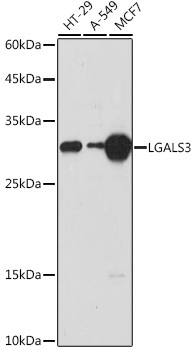
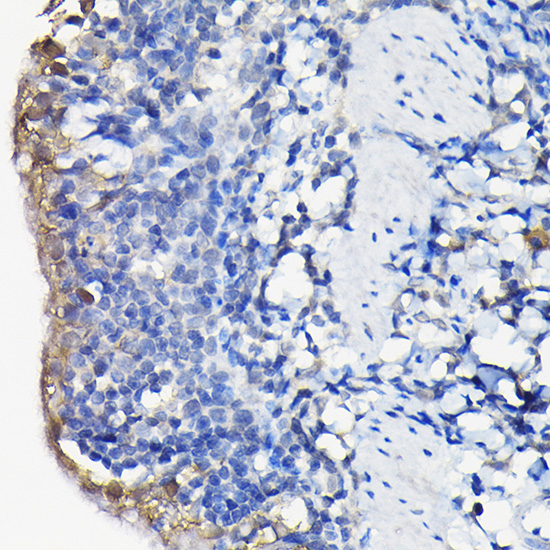


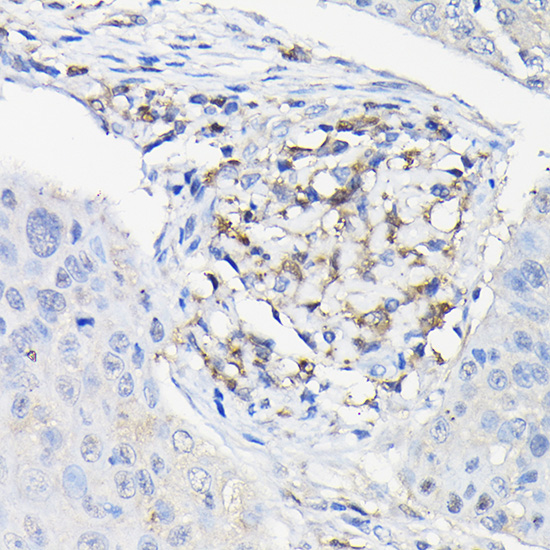
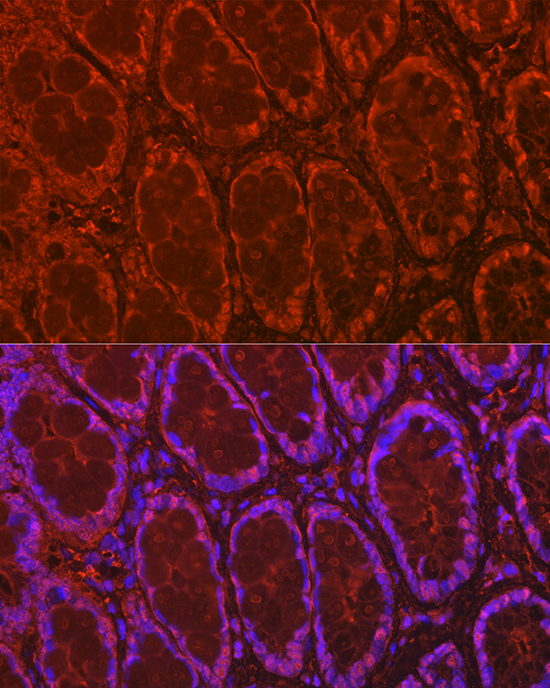

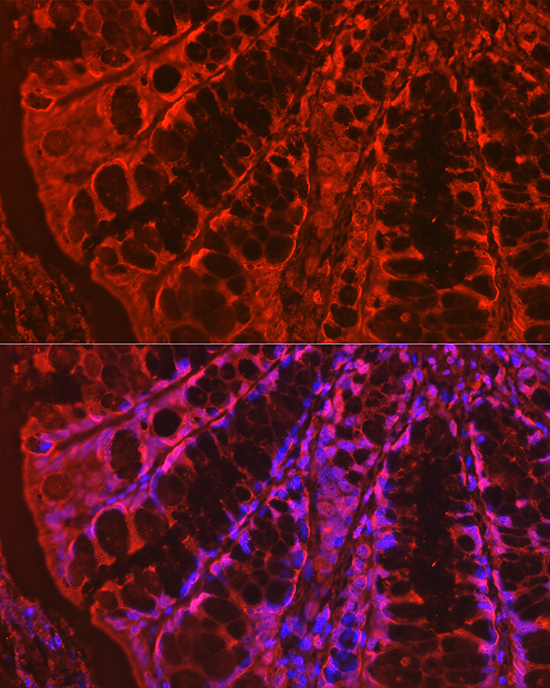
 Yes
Yes



